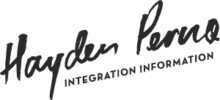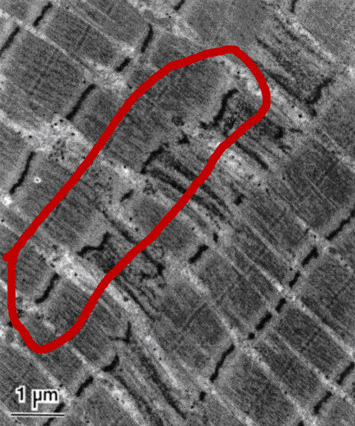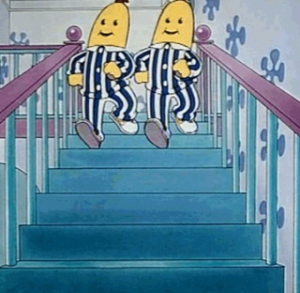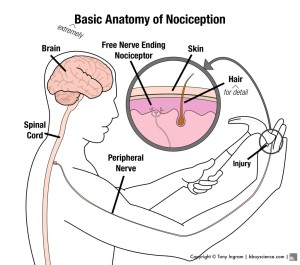Before we get started, if you happen to have missed part one, shame on you, but be sure to click these words right now to be sent straight to it before returning here.
For those that didn’t miss it, let me introduce you to part two by giving you the brief rundown of what you learned last time for a small memory jog.
- DOMS are caused most commonly by eccentric lengthening and/or contraction of the muscle fibres.
- Mechanical stress is the most recent understanding of what DOMS are.
- Lactic acid buildup plays no part in causing you to experience muscle soreness for the days following a workout.
- The muscle spasm theory and stretching to relieve that particular pain also does not stand up to what is currently known about DOMS.
Okay, so now that we’ve got that covered, let’s pick up where we left off and dive right into a most certainly controversial fact about DOMS and their healing process.
To Stretch or Not to Stretch? That Is The Question
Like we saw in the spasm section of part one, (again, click here if you missed it or in fact did the ol’ ‘quick scan of words’ trick), stretching, since the late 1980s, has been disproven as a method for aiding muscle soreness. We can thank what is known as the pain-spasm-pain cycle model for the initial prescription to counter that “p” substance that we learned about, and for showing us that it is an unnecessary prescription to aid in DOMS recovery.
What might come as a shock to you and is contrary to regular beliefs, stretching is in fact known to decrease blood flow.
Take another look at that image above. You can see here what happens when blood circulation is restricted. Certainly not something that we want to be shooting for when we’re trying to reclaim the grace we once had for descending staircases.
That may come as shock to you, but hang in there as I’ll explain why blood flow may be important later on.
The Nervous System
Now, there’s definitely some pros to stretching following the days after exercise. And one particularly fine example is the knowledge that when stretching (and breathing optimally) for a certain period of time, our body’s have the ability to enter what is known as a parasympathetic state. This is when our body is relaxed and begins to set itself up for functions such as digestion and sleep. Perhaps two of your most favourite past times.
To keep things at an equilibrium, our body’s must have a counter mechanism towards this. And this is known as the sympathetic state.
A direct contrast to the parasympathetic state, this particular one is perfect for stressful situations or high performance demanding tasks that we may encounter.
Thanks to evolution, situations like this molded us.
But to bring it back to the topic at hand now that you’re up to date with our two states of being, despite the known benefit to our physiological state from stretching, the knowledge currently points to it actually hindering recovery time as a direct result of disrupting blood flow.
Certainly something to think about next time you reach for those ankles to stretch out those quadzillas.
Speaking of hindering blood flow, in fact, let’s move onto a common “remedy”.
Ice baths
We’ve all of course heard the ice bath prescription. But before you jump in your car and head down to the local petrol station after your sprint session, let me give you the quick heads up.
Unfortunately, not only is the hindering of blood flow thanks to the ice cold ice, providing you with little to no benefit for DOMS, the entire recovery process suffers, too.
“…data suggest(s) that topical cooling, seems to not improve but rather delay recovery from eccentric exercise-induced muscle damage.” – Tseng, et al.
Sorry, guys. I know a lot of you may look forward to your ice cold bath after a workout with a few candles and your favourite Fabio novel, but you can thank this information for helping you save more of your hard earned cash.
So dreamy.
Let’s abolish two more myths for DOMS dealing, and then move on to some helpers.
Massages
This one is likely to ruffle some feathers with some people…
Now, while I know a lot of people always like to discredit studies with the “who funded this one?” and “you can’t believe everything that’s been published” statements, but if I’ve already addressed stretching, ice baths, lactic acid build ups, and muscle spasms, I might as well touch upon this commonly thought ideal DOMS remedy. Right?
Regardless of the ‘make you feel better’ anecdotes, the ironing out of certain knots, personal preference, postural corrections, and many other benefits to getting a good proper rub down from a qualified therapist, let me make my point now that this particular section is only pointed towards the inability a massage has at rectifying, or speeding up muscle soreness recovery.
With studies like this one (here, and this studyhere) pointing more towards the fact that massages are not beneficial, we can again thank the placebo effect for stimulating thoughts towards them providing us with the opposite.
Which isn’t necessarily a bad thing and certainly doesn’t mean that you should stop relaxing and enjoying a weekly massage, but just being aware of the whole situation is, I believe, better than not.
Angry? Sad? No emotions? Let’s do one more.
Pain Meds
The ingestion of pain medication seems to be a hot topic most of the time, as you always have the one side of the fence swearing by them, and the other, never even thinking about touching them.
But regardless of your opinion on the use of them, whether it be the small white ingestible items or that rub-on gel people like to put on and stink up the whole place with, as your nociceptor (pain receptors, remember?) firing is being shunned while under the “spell” of pain meds, the actual treating of the pain you’re in, diminishes. In fact, helping to aid in the actual healing of those sensitive areas, also goes out the window.
But without wanting to bore you with more studies (I will post all the links to what I used in the construction of this post at the conclusion of this series), it’s surprising to note that it’s even said that relying on such methods can not only take away the ability for your muscles to perform at a high demand or optimal level, but that they also increase the length of time that you’ll need for recovery.
But enough of this negative talk. You get it, DOMS suck.
You now know that they’re not a result of lactic acid or pain substances termed “p”. You also now know that stretching, massages, ice baths, and pain medication aren’t going to speed up or aid in the actual healing of your tender regions after exercise, despite the fact that one or more of these may help you feel better.
You seem to be all caught up, so let’s laydown some things that can possibly help…
Next week.
I know, I know. But this is already a 1000+ article. I promise I won’t do it again to you.







